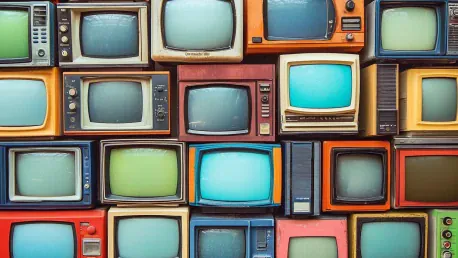The television industry is undergoing a seismic shift as traditional TV networks scramble to adapt to the rapid rise of streaming services. This transformation has led to significant financial implications, with Warner Bros. Discovery (WBD) recently reporting a $9 billion writedown in the value of its TV networks. This alarming figure highlights the severe impact that the migration towards streaming is having on traditional broadcasting models, leaving companies grappling with staggering quarterly net losses and plummeting share prices. As viewers cut the cord on expensive TV packages and advertisers reallocate their spending, networks such as CNN, TLC, and the Food Network are facing an existential crisis.
Warner Bros. Discovery’s recent $10 billion quarterly net loss and a subsequent 12% drop in its share price underscore the scale of the challenge at hand. Traditional TV companies, once reliant on cable subscriber bases and robust advertising revenues, are now compelled to invest billions into developing competitive streaming services to keep up with early movers like Netflix. However, a gnawing question persists: Can these traditional networks achieve sufficient scale and profitability in their streaming ventures before the inevitable decline of linear television through cable, satellite, or aerial connections?
Streaming Giants and the Struggle for Scale
Media analyst Alex Degroote aptly describes the current status of traditional TV as either dead or in a “zombie mode,” suggesting that platforms like YouTube, TikTok, and industry leader Netflix have effectively replaced the old guard. The merger between WarnerMedia and Discovery was a bold attempt to navigate this rapidly evolving landscape, yet it has led to a drastic 70% reduction in WBD’s market value over the past two years, signaling a deepening investor skepticism.
Despite some notable successes along the way, the financial journey towards streaming has been immensely costly for traditional media companies. Disney, one of the few traditional TV giants to achieve a profitable quarter with its streaming services, has amassed a staggering $11 billion in losses since the launch of Disney+ in 2019. Nonetheless, Disney’s impressive accumulation of over 200 million global streaming subscribers shows that there is considerable potential in this market. Similarly, WBD has attracted more than 100 million subscribers, thanks largely to the success of Discovery+ in the UK, bolstered by exclusive rights to major events like the Olympics. Yet, subscriber growth alone is not the silver bullet; networks must now focus on optimizing revenue and profit per subscriber.
Key strategies employed to bolster profitability include raising subscription prices and offering ad-supported tiers for budget-conscious viewers. These measures aim to bridge the gap between increasing operational expenses and a revenue model that relies more heavily on individual subscriptions rather than traditional advertising dollars. However, whether these strategies will be enough to compensate for the revenue lost from declining cable subscriptions remains an open question.
Digital-Native Models Pave the Way
The television industry is undergoing monumental changes as traditional TV networks hustle to keep up with the rapid rise of streaming services. This shift has prompted significant financial repercussions, exemplified by Warner Bros. Discovery (WBD) reporting a staggering $9 billion writedown in the value of its TV networks. This dramatic figure underscores the severe impact of the streaming migration on conventional broadcasting models. Companies are now grappling with huge quarterly net losses and rapidly declining share prices. As viewers abandon costly TV bundles and advertisers shift their budgets, networks like CNN, TLC, and the Food Network are facing existential threats.
Warner Bros. Discovery’s recent $10 billion quarterly net loss and a 12% drop in its share price highlight the gravity of the situation. Historically dependent on cable subscriptions and strong advertising revenues, traditional TV networks are now forced to pour billions into competitive streaming services to keep up with pioneers like Netflix. The critical question looms: Can these traditional networks achieve the necessary scale and profitability in their streaming initiatives before linear television, via cable, satellite, or aerial connections, becomes obsolete?









